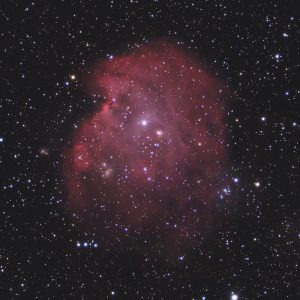Astronomie
The Nordenham Gymnasium is one of the few schools in Germany fortunate enough to have an observatory on its roof and a planetarium within its premises. This allows for the observation and photography of celestial objects such as the Moon, planets, nebulae in the Milky Way, and even distant galaxies. In bad weather, the night sky is projected onto the planetarium dome using the school’s own Zeiss projector.
Although the observatory and the planetarium are not owned by the school but by the association between the association and the school. As a result, students also have access to the observatory, . Nordenhamer Sternfreunde e.V.there is a close cooperation between the association and the school. As a result, students also have access to the observatory, the planetarium, and other offerings from the *Sternfreunde*, such as the regular lectures by leading astronomers held in the school’s lecture hall, or the observation evenings at the observatory (all information available at https://www.nordenhamer-sternfreunde.de/ ).
Zum Nachmittagsprogramm der Schule gehört des Weiteren die Astronomie-AG, die fester Bestandteil des AG-Angebots der Schule ist und von Herrn Witschen geleitet wird. In dieser AG werden astronomische Themen mal wissenschaftlich und mal spielerisch erschlossen. So betreiben die Mitglieder unter anderem den Instagramkanal astrogymnnordenham, auf dem regelmäßig die neuesten Astrofotografien der Sternwarte veröffentlicht und näher erläutert werden. Hierzu recherchieren die Schülerinnen und Schüler, was genau auf den Bildern zu sehen ist, um ihr gewonnenes Wissen dann mit anderen zu teilen. Außerdem werden im Rahmen der AG immer wieder Projekte verfolgt wie das Drucken eigener T-Shirts mit dem Markenlogo (Astrogymnordenham) oder dem Postkartenverkauf auf dem Weihnachtsbasar. Für diesen druckte die AG die schönsten Astrofotos auf Postkarten, um mit dem Erlös ein Sonnensystem aus LEGO zu kaufen und bauen zu können. Die AG steht allen Schülerinnen und Schülern ab Jg. 7 offen.
Recently, *AstroGymNordenham* also launched a YouTube channel featuring videos about the observatory, the club, and related topics. It can be found at: www.youtube.com/@AstroGymNordenham
The contact person for all matters related to astronomy is Mr. Witschen.
The Heart Nebula is located in the constellation Cassiopeia and can be observed well in autumn and early winter. It is part of the Milky Way band. Its characteristic shape clearly explains why it is called the Heart Nebula. It consists mainly of emission nebula regions, which are responsible for its coloring, but it also contains elements of reflection nebulae.

Hardly had this Mars season begun when it was already over. This was due, on the one hand, to the frequently poor weather and, on the other hand, to the fact that during this year's opposition, Mars came significantly less close to Earth (approximately 96 million kilometers) compared to other times (in favorable cases, the distance can be around 55 million kilometers). Consequently, the level of detail that can be expected in photographs is also noticeably lower. This image was taken on January 11, 2025, using the observatory's C14 telescope – just one day before Mars’s closest approach to Earth. It will be a little over two years before Mars comes close to Earth again. Visible in the image are various features of the planet’s geographical structure, including the polar ice cap.

The nebula is also known as the Crescent Nebula and is located 4,700 light-years away within the Milky Way. It is an emission nebula. Those who wish to observe it can find it in the constellation Cygnus, which is especially visible in summer and autumn. The nebula was discovered by the famous astronomer William Herschel. Even with small telescopes, the Crescent Nebula can be observed quite well.

This nebula region consists of reddish glowing emission nebulae as well as dark clouds that contain reflection nebulae (i.e., dust illuminated by surrounding stars). This contrast gives the nebula its unique appearance. NGC 6914 can be found near the bright star Sadr, which is part of the constellation Cygnus. Cygnus is one of the most beautiful constellations of the summer Milky Way.

“Der Affenkopfnebel, der auch als NGC2174 bezeichnet wird, liegt im Sternbild Orion. Der Nebel wurde am 6. Februar 1877 von Eduard Stephan entdeckt. Er ist 6400 Lichtjahre von der Erde entfernt und 75 Lichtjahre groß. Der Affenkopfnebel ist von August (spätabends) bis April früh abends) zu beobachten.
Aufgenommen auf der Sternwarte Nordenham mit Askar 103, ZWO ASI 2600MC auf Celestron AVX”

